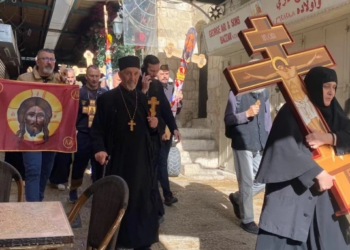The Rafale’s combat record and advanced capabilities have helped France become the world’s second-largest arms exporter.
The French Rafale jet continues to surge in popularity as more nations opt to acquire the top fighter platform. As part of the country’s efforts to bolster defense and deterrence, French president Emmanuel Macon vowed to ramp up orders for additional jets as the world becomes “increasingly dangerous” and “increasingly uncertain.” According to French officials, two new Rafale squadrons made up of forty airframes will be up and running by 2035. The Luxeuil-les-Bains airbase will become the first in France to host the latest iteration of the Rafale jets, which are equipped with a hypersonic nuclear missile. The future ASN4G hypersonic nuclear missile will serve as a key component of France’s nuclear deterrence strategy. As a well-respected fighter platform, the Rafale has also caught the attention of other nations. In fact, the Rafale’s combat record and advanced capabilities have certainly helped France become the second-largest arms exporter across the globe.
An Overview of the Rafale
The Rafale jet was born from an effort to consolidate aircraft platforms in service with the French Navy and French Air Force in the 1970s. Initially, France collaborated with Germany, Italy, the United Kingdom, and Spain to develop a jointly designed “Future European Fighter Aircraft.” Ultimately, however, France opted to go ahead and work on its own domestic platform. The French government required a new aircraft capable of air-to-air, air-to-ground, and all-day operations. The resulting Rafale jet was developed to replace a wide range of aircraft, including the Jaguar, Mirage, the F-8P Crusader, the Super Etendard, and other platforms. Notably, the Rafale is nearly entirely constructed by France-based contractors, including Thales, Safran, and Dassault.
As a “renaissance” aircraft, the Rafale is capable of performing interdiction, air supremacy, aerial reconnaissance, ground support, and other missions. When it comes to the platform’s countermeasures and electronics, it is definitely top-tier compared to other fourth-gen fighters. The jet is equipped with the Thales-designed RB2s passive electronically scanned array radar and the Saturn onboard ultra-high-frequency radar. While the Rafale is not considered to be a stealth aircraft, its relatively small radar cross-section and tail fin make the fighter more difficult for adversaries to detect in the skies. A pair of Snecma M88 engines power the Rafales, offering 17,000 pounds of thrust with afterburners engaged. In terms of ordnance, the French jet is truly a powerhouse. Each jet can carry payloads of more than 9 tons on fourteen hardpoints, including ASRAAM and AMRAAM air-to-air missiles, as well as HARM, Apache, Maverick, and PGM100 air-to-ground missiles.
The Rafale’s popularity across the globe is certainly due to its top-notch attributes. Nations including the United Arab Emirates, Greece, Egypt, Indonesia, Croatia, and Qatar have procured the French jet over the years. Over the last year alone, almost 300 Rafales have been ordered by multiple foreign client states, highlighting the platform’s continued success on the export market. The latest iteration in the fighter series is expected to be even more coveted as it will feature a whole new host of cutting-edge capabilities.
About the Author: Maya Carlin
Maya Carlin, National Security Writer with The National Interest, is an analyst with the Center for Security Policy and a former Anna Sobol Levy Fellow at IDC Herzliya in Israel. She has by-lines in many publications, including The National Interest, Jerusalem Post, and Times of Israel. You can follow her on Twitter: @MayaCarlin. Carlin has over 1,000 articles published over the last several years on various defense issues.
Image: VanderWolf Images / Shutterstock.com


















